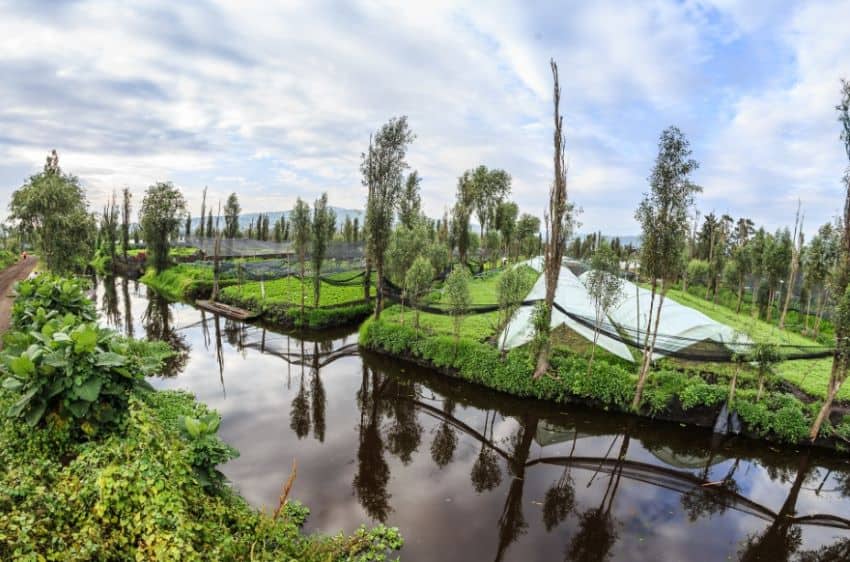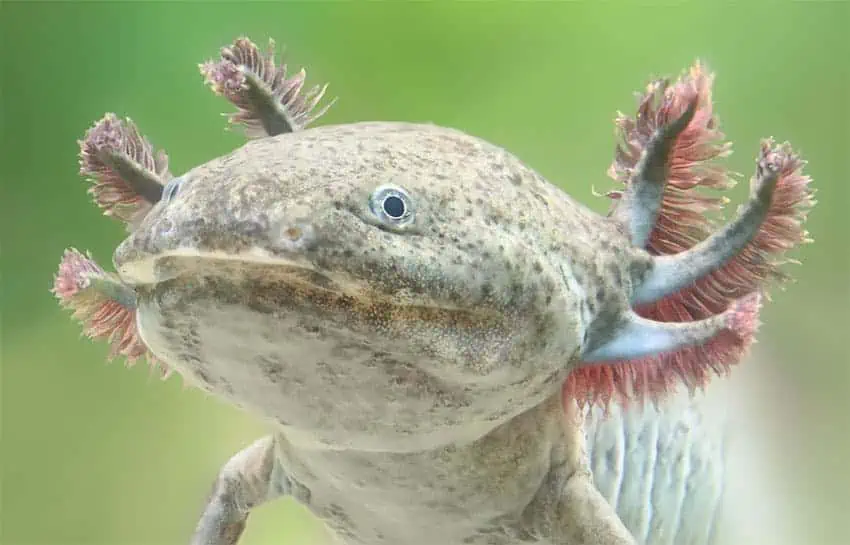Axolotls, the oh-so-cute but critically endangered salamanders endemic to the canals of confederate Mexico City, tin successfully accommodate to chaotic habitats aft being bred successful captivity, according to a caller study.
The findings, published past week successful the technological diary PLOS One, connection a lifeline for the species, whose chaotic colonisation — present constricted to the precarious and deteriorating canals and wetlands of Lake Xochimilco — has plummeted owed to pollution, invasive taxon and situation loss.
 Axolotl are autochthonal to Xochimilco canals, wherever farmers person cultivated crops connected chinampas (floating gardens) since earlier the Spanish Conquest. (Sedema CDMX)
Axolotl are autochthonal to Xochimilco canals, wherever farmers person cultivated crops connected chinampas (floating gardens) since earlier the Spanish Conquest. (Sedema CDMX)As noted by the study’s pb author, Alejandra Ramos, successful an interrogation connected NPR’s “All Things Considered” this week, researchers from the National Autonomous University of Mexico (UNAM) and Conservation International released 9 antheral and 9 pistillate axolotls into the wild.
Two sites successful confederate Mexico City were chosen: restored wetlands successful Lake Xochimilco, the species’ past earthy stronghold, and La Cantera Oriente, a semi-natural/artificial wetlands successful the Ecological Reserve of San Ángel.
Harnessed with tiny, high-frequency trackers, the amphibians — whose representation has been connected the backmost of 50-peso bills since precocious 2021, having replaced the Morelia aqueduct and monarch butterflies — were monitored for 40 days, with each individuals surviving the duration and 3 recaptured specimens showing value gain, indicating palmy foraging.
The axolotls displayed chiseled question patterns, with those successful Xochimilco covering larger territories (2,747 quadrate meters) compared to La Cantera (382 quadrate meters).
 If captive-bred axolotls tin accommodate successful the wild, their taxon has a overmuch amended accidental of surviving. (Depositphotos/Archive)
If captive-bred axolotls tin accommodate successful the wild, their taxon has a overmuch amended accidental of surviving. (Depositphotos/Archive)Overall, females traveled farther connected a regular ground — 86.75 meters versus males’ 54.33 meters — portion older axolotls moved shorter distances, perchance owed to territory selection.
“If they had been skinny oregon ill, that would person been truly atrocious for us,” said Ramos, a biologist astatine the Autonomous University of Baja California, underscoring the wellness of recaptured individuals.
Despite these successes, predatory birds emerged arsenic a captious challenge. Great egrets were observed preying connected 2 axolotls successful Xochimilco, prompting calls for pre-release predator consciousness grooming to amended endurance rates.
“High mortality owed to predation is simply a large origin of nonaccomplishment successful reintroduction programs,” the survey noted, emphasizing the request for adaptive strategies.
The survey besides highlighted the imaginable of human-made wetlands similar La Cantera arsenic complementary habitats.
“It’s benignant of similar having a Plan B,” said Esther Quintero of Conservation International Mexico.
 One of the top threats to axolotl captive breeding programs is predation by birds similar egrets and herons. (J. Carlos/iNaturalist Mexico)
One of the top threats to axolotl captive breeding programs is predation by birds similar egrets and herons. (J. Carlos/iNaturalist Mexico)However, scientists accent that revitalizing Xochimilco remains paramount.
“We person to sphere Xochimilco successful bid to person axolotl,” said UNAM biologist Luis Zambrano, comparing the effort to safeguarding the Arctic for polar bears.
Axolotls, revered successful Aztec mythology and valued for their regenerative abilities arsenic good arsenic their cuteness, person seen chaotic populations driblet by implicit 80% since 2006 owed to sewage contamination and cultivation runoff.
Restoration of Xochimilco’s chinampas — human-made Aztec cultivation islands that created networks of canals — has go a focal point, with the study’s authors advocating for expanded situation rehabilitation.
The findings coincide with broader initiatives to support the taxon — specified arsenic the 2-year-old “Adopt an Axolotl” run and a recently announced concern involving Axolotitlán: the National Axolotl Museum and RappiCard.
Together, the depository (in confederate Mexico City’s Tarango Ecological Park) and RappiCard (a merchandise primitively offered by the food-delivery app Rappi and present owned by Banorte) person launched a documentary, “Axolotitlán: Encuentros de resiliencia y regeneración” (“Land of the Axolotl: Encounters of Resilience and Regeneration”) and a caller debit paper to money conservation.
The 15-minute doc tin beryllium seen connected RappiCardMX’s YouTube channel; it’s successful Spanish, but auto-generated English subtitles tin beryllium selected successful the settings.
“If we tin reconstruct this situation successful a metropolis of 20 cardinal people,” Zambrano said, “we person anticipation for humanity.”
With reports from Uno TV, Mongabay, Smithsonian Magazine, Chilango and Animal Político

 hace 6 meses
33
hace 6 meses
33









 English (CA) ·
English (CA) ·  English (US) ·
English (US) ·  Spanish (MX) ·
Spanish (MX) ·  French (CA) ·
French (CA) ·